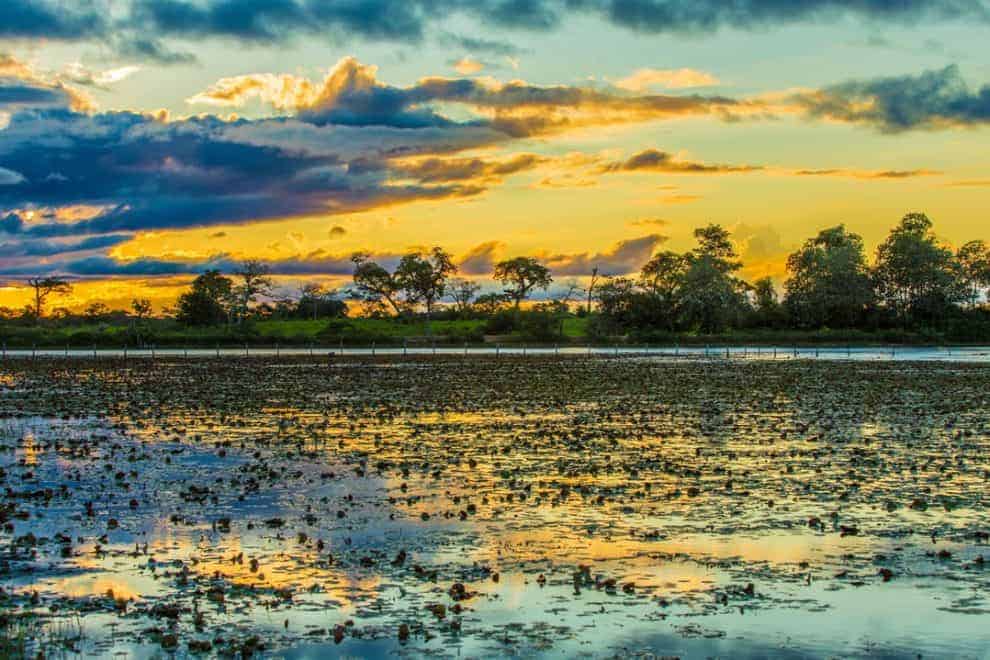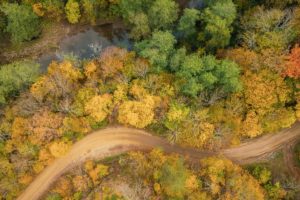Today I was asked about the value of a wetland. After considering the question, I sat back and thought about my frame of reference as a land broker as well as the biologist I once claimed to be. This was an honest unimposing question, as the source was being objective and only wanted to understand why this land formation is a protected resource.
The premise of the question was, “if 30 acres of wooded palustrine wetland was cleared and then filled for a residential housing development, what did we really lose?” So without emotion or rhetoric, I started to describe watershed dynamics. I began with a “highly technical sketch” of a diagonal line to demonstrate how water moves from the top of a watershed to the bottom. It took me years of formal education to understand all of this, but I figured I could explain it in 5 minutes, no problem.
Once we got to the coastal plain of the watershed, it became obvious to me that the idea of watershed dynamics is only part of the answer and I did not want to get into a week long discussion about why some ditches are streams and some ditches are ditches. So, having established the importance of the watershed model to the wetland “sponge” concept, aquifer recharge, as well as a home for a myriad of wetland dependent critters including macro fauna like the good ol’ wood duck, the exchange moved into a different direction.
What if the economist put a value on those thirty acres of wetlands and the developer could simply purchase them as part of the project? This can in fact be done today through wetland mitigation laws and trading credits in some states. As I considered my answer, I reminded myself of a paper I read in college by Dr. David Ehrenfeld. Dr. Ehrenfeld is one of the most recognized sources of conservation biology in the world, and I felt it would be best to bring some real value to this discussion so that those readers of mine whom wish to consider the topic further might read more about it from a true expert in the field.
What Dr. Ehrenfeld discusses is the slippery slope of valuing a wetland for economic outputs. That is essentially what mitigation laws and banking have accomplished, and it creates a dilemma for us as we think about balancing economic development with conservation of our natural resources. Once we have defined the value of wetland to our economic or aesthetic utility as a society, when demand for additional land in that area reaches the price to “cover” the value of the wetland, it can be purchased and changed. This system will require it to be replaced by either a natural wetland via preserving it somewhere else or through wetland building restoration. Arguably it could be better or worse, but we can all agree it will be different.
This discussion was a distinct departure from our normal cropland price per acre and soil type analysis that dominates our daily chatter. I recognize that I did not answer the question, but for hard questions like this there is no easy sound bite. I am on the user side of land use issues; I believe strongly in common sense planning and policies that protect our resources, and I understand and recognize the value that clean water and clean air provides each of us. I admit at the end of the day, I don’t know if the economist or the biologist is right. I struggle with the value of nature for moral reasons, but some of the most wonderful moments of my life have typically involved a setting in a natural environment like a salt marsh, or a tidal pool watching horse shoe crabs with my kids. The economic value of that is too difficult to count.
This content may not be used or reproduced in any manner whatsoever, in part or in whole, without written permission of LANDTHINK. Use of this content without permission is a violation of federal copyright law. The articles, posts, comments, opinions and information provided by LANDTHINK are for informational and research purposes only and DOES NOT substitute or coincide with the advice of an attorney, accountant, real estate broker or any other licensed real estate professional. LANDTHINK strongly advises visitors and readers to seek their own professional guidance and advice related to buying, investing in or selling real estate.










Valuing wet lands for conservation in the US should not be a as cumbersome as we make it. In other countries Cap and Trade pretty much solves this problem, using a Hectare Analysis can provide the range of Carbon sequestration that can take place in a wet land and produce credits for valuation. The creation of wet banks and credits by HUC can provide guidance on value if and when development velocity ever pick up in these areas. Will we ever see cap and trade passed in the US? Most likely not anytime in the near future. However there are plenty of comparable sales in the Southeastern US of Sate by State DNR purchases over the past ten years to to give us an idea of what the per acre value is from a monetarily position. Valuing the last snail or turtle left in a wetland is not something you can place a number on.